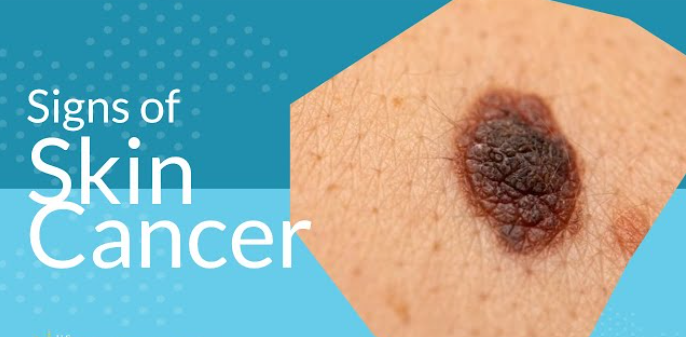Know the basics of symptoms, diagnosis, and treatment to help you battle skin cancer.
With heart disease coming in first, cancer has been the second most common cause of death in the US for a long time. A change in the way the body’s cells divide gives rise to a group of diseases collectively known as cancer. It can appear in almost any part of the body, including the lymphatic system, organs, bone, and blood. Out of all these illnesses, cancer is the one that affects the greatest number of people. According to the American Cancer Society, skin cancer is “by far the most common type of cancer.” Its widespread occurrence makes sense, too, considering that the skin is the largest organ in the body and has millions, if not billions, of cells, all of which have the potential to become cancerous over time.
Although skin cancer is very common, it’s not a single disease either. There are several different kinds.
Also read-Thyroid Cancer : A Patient’s Guide to Thyroid Cancer And Its Symptoms

Types of skin cancer
There are several types of skin cancer that occur in different parts of the skin, or epidermis, but the three major types are:

- Basal cell carcinoma
- Squamous cell carcinoma
- Melanoma skin cancer
Signs and symptoms
Early signs of skin cancer can be subtle. The CDC reports that a change in your skin is the most common sign. This change could be a mole that darkens, bleeds, or falls off, the development of a new growth, or the development of a sore that won’t heal. One easy way to remember all the things that can signal skin cancer is knowing your ABCs, which relate to characteristics of melanoma that should send you to the doctor for evaluation:

- A: Asymmetrical. If a mole or spot is irregular or asymmetrical in shape, that’s cause for concern.
- B: Border. A jagged or irregular border around a mole or darker spot on the skin could also be a sign of cancer.
- C: Color. Is the mole or spot darker in one area versus another? Uneven color can signify a problem.
- D: Diameter. The larger a spot or mole is, the more likely it is to be cancer. If it’s larger than the size of a pea, definitely get it checked out.
- E: Evolving. If your questionable mole or spot has changed recently, talk to your doctor.
If you develop red bumps, lumps, sores, or new moles, those are all good reasons to ask your doctor to have a look.
Causes and risk factors
Sunlight is the main factor that can increase your risk of developing skin cancer, though it is difficult to identify a single cause for any given case of the disease. Dr. Cameron Rokhsar is an associate clinical professor of dermatology at Mount Sinai Hospital in New York City. “We know that the two most common skin cancers are directly related to the amount of sun exposure received over a lifetime,” he says.

Exposure to ultraviolet light, a form of radiation present in sunlight, has been linked to a higher incidence of skin cancer because UV radiation can damage genes in skin cells, leading them to turn cancerous. As such, where you live can be a contributing factor to the development of skin cancer. Places that are sunnier and warmer tend to have higher rates of skin cancer than colder climes, where people tend to be bundled up more. The National Council on Skin Cancer Prevention reports that “the risk of skin cancer is twice as high in Arizona compared to Minnesota… Spending a lot of time outdoors without covering your skin and using sunscreen increases your risk.” The use of tanning beds has also been linked to increased rates of skin cancer, so skip the scorch for better skin health.
Your risk may also be increased by exposure to other radiation sources and specific chemicals like pesticides and arsenic. Another behavior that has been connected to a higher risk of skin cancer is smoking. Age is a risk factor as well, similar to most other forms of cancer: the longer it takes for your cells to acquire genetic mutations, the higher the likelihood that they will become malignant. Rheumatoid arthritis is one of the other medical conditions that can increase your risk of skin cancer.
Diagnosis
To confirm a suspicion of skin cancer, your doctor will biopsy a sample of cells and look at them under the microscope. This is usually a very simple procedure that can often be done in your dermatologist’s office.

If the biopsy returns a positive result, your doctor may authorize additional tests to check whether the cancer has spread to other parts of the body, such as imaging to look at nearby lymph nodes. You may also undergo surgical removal of nearby lymph nodes to see if cancer is present, a procedure called sentinel node biopsy.
Treatment
To treat basal and squamous cell carcinomas and precancerous skin lesions called actinic keratoses, typically the doctor removes the growth. This can be done in a number of ways, including by shaving off or cutting out the cells or freezing them with liquid nitrogen.

Excising or removing the cells is the basic treatment for early-stage melanomas, Funchain says, “and surgery is curative in well over 90 percent of cases. Most people with a melanoma will never have to worry about it again,” after it’s been removed.
Also read-Ovarian Cancer : A Patient’s Guide to Ovarian Cancer And Its Symptoms
images source: Google
Disclaimer: The opinions and suggestions expressed in this article are solely those of the individual analysts. These are not the opinions of HNN. For more, please consult with your doctor.




































